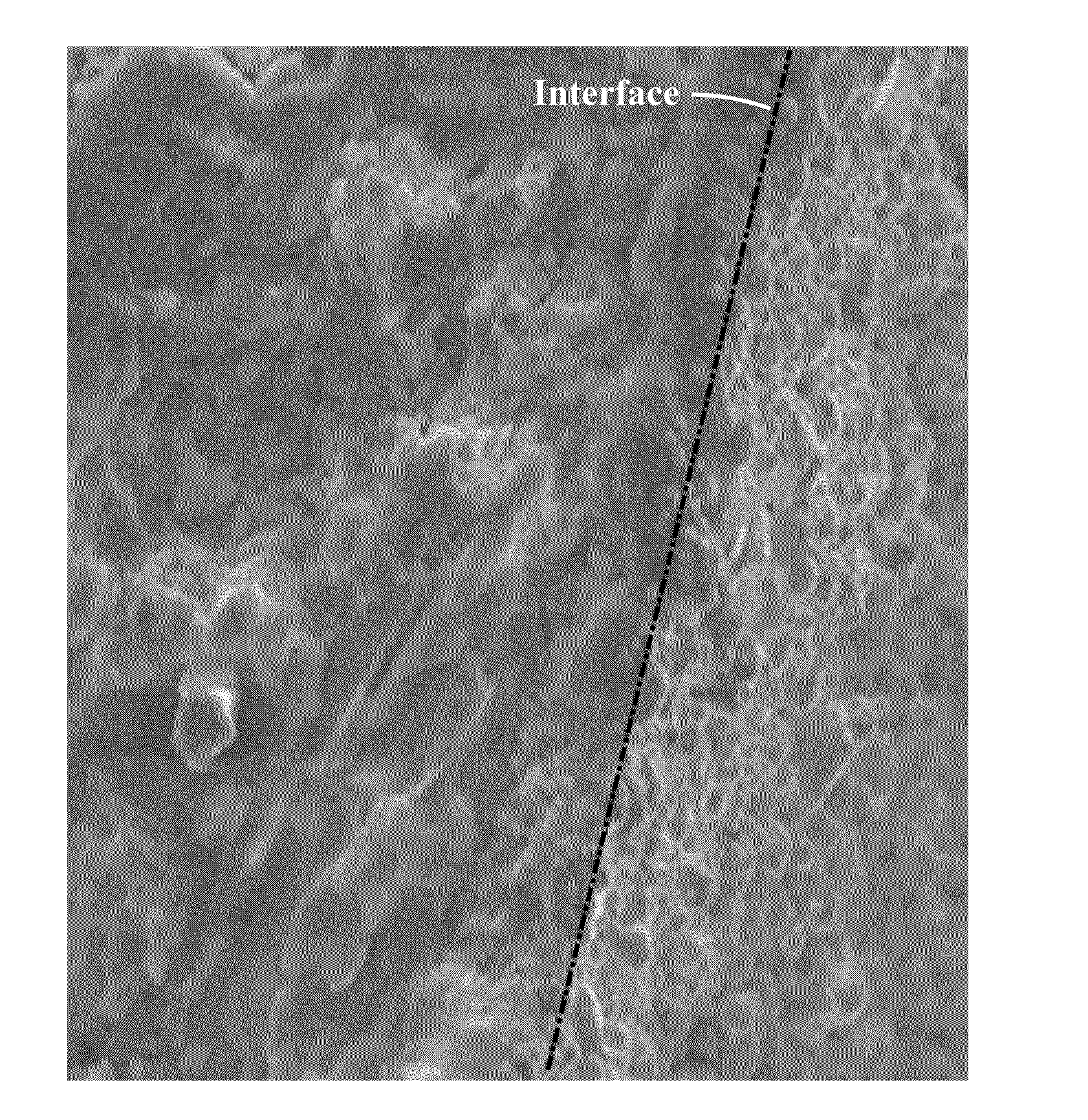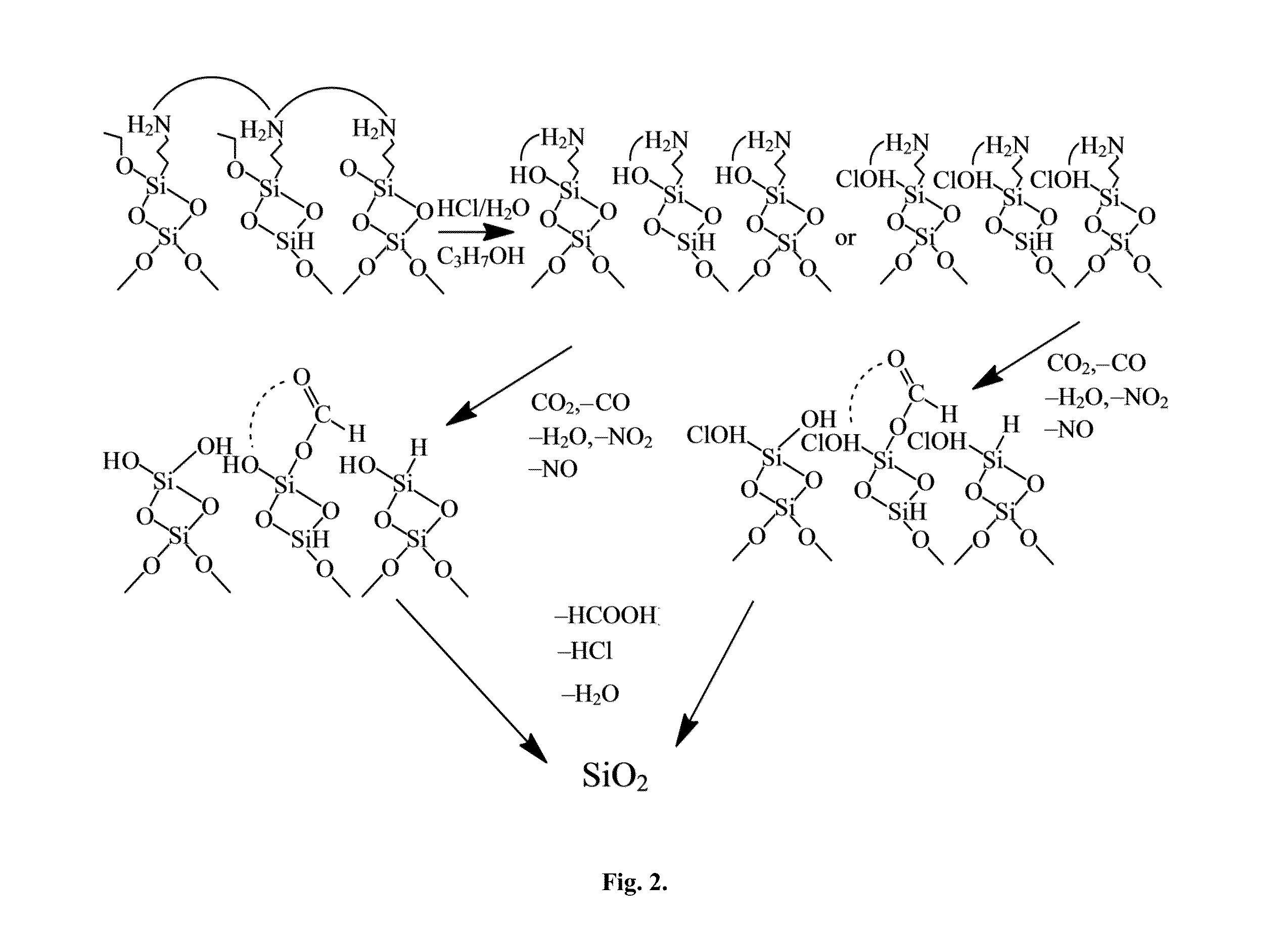Method of encapsulating a phase change material with a metal oxide
a phase change material and metal oxide technology, applied in the direction of heat exchange elements, coatings, chemistry apparatus and processes, etc., can solve the problems of low thermal conductivity of inorganic pcms, very low heat transfer characteristics, and high cost, and achieve high energy density, large capacity, and low cost
- Summary
- Abstract
- Description
- Claims
- Application Information
AI Technical Summary
Benefits of technology
Problems solved by technology
Method used
Image
Examples
example 1
[0049]NaNO3 was used because of its low cost and significantly high latent heat compared to other PCMs that melt at similar temperatures of between 300 and 400° C. (Bauer, et al., 2012, “Characterization of Sodium Nitrate as Phase Change Material,” International Journal of Thermophysics, 33(1), pp. 91-104). NaNO3 was formed into cylindrical TESM pellets using appropriate dies in a bench top power press (ranging from 13 to 30 mm diameter). Porosity of the cylindrical pellets varied with the pressure applied in the press and the diameter of the die, from 1 to 5% depending on the size and pressure applied. All the measurements of porosity were performed with the aid of Sartorius YDK01MS apparatus.
[0050]Encapsulation of PCMs with a metal oxide (SiO2) contributes in achieving high temperature performance (300 to 500° C.) with cyclic performance capability. A technique was developed to self-assemble a SiO2 layer over the pellets (Chou, et al., 2002, “Organic-inorganic sol-gel coating for ...
example 2
[0054]NaNO3 is used as a PCM, and was formed into TESM pellets. Spherical pellets of different diameters (2 mm to 10 mm) were formed using the Mars Minerals disc pelletizer. The porosity of the spherical pellets obtained from the pelletizer varied from 22 to 29%. All the measurements of porosity were performed with the aid of Sartorius YDK01MS apparatus.
[0055]Spherical pellets were alternatively made by agglomeration in a rotating drum. Water was sprayed at spaced intervals to help the powder form into balls as the drum rotated. However, little control over porosity and size of the pellet was provided by this method.
[0056]As disclosed in Example 1, above, a high temperature polymer polyimide (PI) was coated onto the NaNO3 spherical pellets by dip coating or brush application. The PI was cured by air drying for 1 hour, followed by heating the pellet to 250° C. at a rate of 4° C. / minute and dwelling for 2 hours at 250° C., as disclosed above. The SiO2 layer was added to the pellets fo...
example 3
[0057]Uniform coating of the phase change material pellet directly controls the stability of the pellet during cyclic heating. The SiO2 coatings initially produced were occasionally highly non-uniform. Highly viscous liquids, like PI, create difficulty in uniform application over NaNO3 pellets. Dip coating the precursor solution was found to product extra solution over the NaNO3 pellets, which would protrude from the pellet after curing. During the curing process, the viscosity of the solution reduces as the temperature increases and excess solution drips down the NaNO3 pellets. Hence a thorough application of the right amount of precursor solution is required.
[0058]Another concern which is identified to play an important role in determining the uniformity of SiO2 coating role is surface roughness of the substrates. More rough surfaces are preferred in providing the uniform coatings. As the smooth PI coatings gives rise to non-uniform coatings, silicon carbide (SiC) is mixed with PI...
PUM
| Property | Measurement | Unit |
|---|---|---|
| porosity | aaaaa | aaaaa |
| porosity | aaaaa | aaaaa |
| temperature | aaaaa | aaaaa |
Abstract
Description
Claims
Application Information
 Login to View More
Login to View More - R&D
- Intellectual Property
- Life Sciences
- Materials
- Tech Scout
- Unparalleled Data Quality
- Higher Quality Content
- 60% Fewer Hallucinations
Browse by: Latest US Patents, China's latest patents, Technical Efficacy Thesaurus, Application Domain, Technology Topic, Popular Technical Reports.
© 2025 PatSnap. All rights reserved.Legal|Privacy policy|Modern Slavery Act Transparency Statement|Sitemap|About US| Contact US: help@patsnap.com



